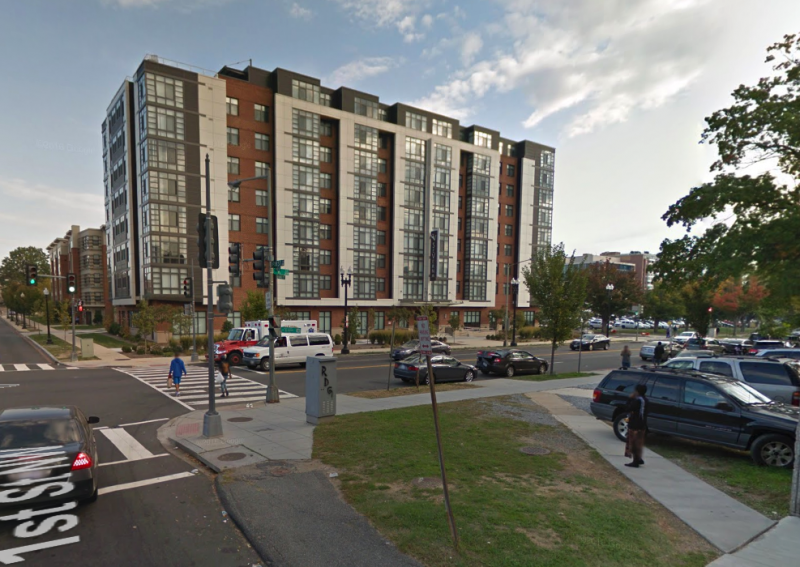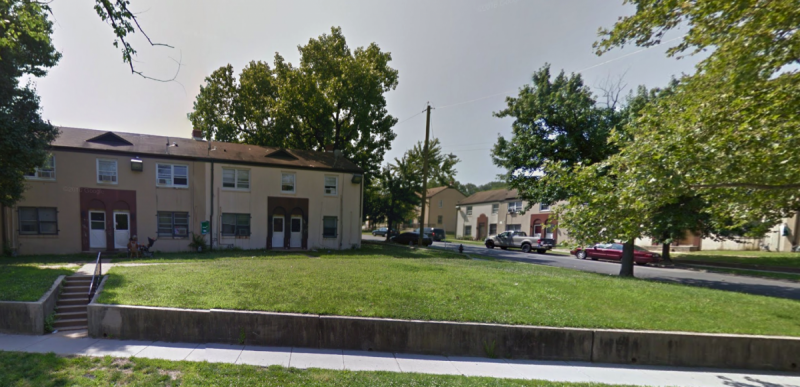Greater Greater Washington by Brian McCabe

In December, the DC's Deputy Mayor for Planning and Economic Development (DMPED) accepted proposals for the redevelopment of Northwest One – a site between Mount Vernon Square and NoMA.
Northwest One is one of four citywide sites being developed under the New Communities Initiative (NCI), a program the District government created to redevelop communities surrounding four public housing developments into mixed-income neighborhoods. The program was designed with many of the same goals as HOPE VI, a federal program to redevelop extremely distressed public housing.
Despite the initiative’s lofty goals, it has been beset by problems and setbacks since its establishment a decade ago. As Aaron Wiener quipped in the Washington City Paper several years ago, “the New Communities program has failed to produce new communities.”
The DC Council authorized the creation of the New Communities program more than a decade ago.
The city created the New Communities Initiative to redevelop the neighborhoods surrounding four public housing sites: Park Morton in Ward 1; Northwest One in Ward 6; Lincoln Heights in Ward 7; and Barry Farm in Ward 8.
The program is run through a partnership with the Deputy Mayor for Planning and Economic Development (DMPED) and the DC Housing Authority (DCHA). It acknowledges the growing limitations of relying on federal financing to meet the unmet needs of deteriorating public housing (and the neighborhoods surrounding them).
Critically, the New Communities Initiative is not a new source of funding for affordable housing in the District. Instead, it draws on existing programs and tools, including the Housing Production Trust Fund, to redevelop these four communities. The Initiative calls for the integration of existing programs to improve the health, job readiness and human capital in each neighborhood, rather than just their physical redevelopment.

The New Communities Initiative is only in the District, but it came out of the legacy of the federal HOPE VI program.
HOPE VI was a federal program to replace “severely distressed public housing” developments throughout the country. It was authorized by Congress in 1994 and discontinued in 2011.
Proponents of the HOPE VI program recognized that many public housing developments across the country were falling apart. Decades of neglect and cutbacks in federal funding had created millions of dollars in unmet capital expenses. HOPE VI allowed local housing authorities to compete for federal funding to redevelop “extremely distressed” public housing – or public housing in the worst shape in the country. In 1992, a report from the National Commission on Severely Distressed Public Housing reported that six percent of public housing units – about 86,000 apartments – were severely distressed.
The HOPE VI program drew on many principles of New Urbanism, which focuses on “human-scale”, walkable developments. Proponents of New Urbanism aim to build aesthetically appealing, mixed-income neighborhoods close to lively public spaces and shopping areas. To create these types of communities, public housing developments were replaced by low-rise housing available to both low-income and market-rate residents. HOPE VI emphasized the importance of using federal funds to leverage investments from other city programs and private developments.
The District received seven grants through the HOPE VI program during the course of the program’s existence. These led to the redevelopment of the Ellen Wilson Dwellings, Arthur Capper Carrollsburg, Wheeler Creek Estates, Henson Ridge, Capitol Gateway, Glenncrest and Sheridan Terrace.
Today, an extensive body of research tracks the impact of HOPE VI on communities and neighborhoods. Critics point to the way these redevelopments disrupted social networks in neighborhoods, contributed to the displacement of low-income residents and made neighborhoods more expensive for existing residents. Proponents argue that HOPE VI improved the neighborhood quality, raised property values and replaced some of the worst public housing in the country with high-quality housing units.
While funding for HOPE VI has been discontinued, HUD has created the Choice Neighborhood Initiative (CNI) to continue efforts to improve neighborhoods with deteriorating public housing.
While the New Communities Initiative draws on some of the same principles as HOPE VI, it is different from HOPE VI in several key ways.
First, through the NCI, the DC government aims to replace public housing developments with vibrant, mixed-income communities. Like those selected through HOPE VI, each of the sites selected for the New Communities Initiative is centered around a public housing development. However, the program is intended as more than the rehabilitation of distressed public housing. It is meant to bring renewed retail activity, new public spaces and public facilities, coordinated social services and extensive housing development to these neighborhoods.
Second, the NCI proposes a one-for-one replacement of affordable housing units. For each unit of public housing demolished through the NCI, a new unit of affordable housing will be built. This was not generally a requirement of HOPE VI, although some HOPE VI projects did include full replacement of affordable units.
Third, the New Communities Initiative aims to take a “build-first” approach. Unlike HOPE VI, which typically constructed affordable units only after the public housing was torn down, the NCI prioritizes the construction of new affordable housing units prior to the destruction of the housing it is intended to replace. This principle often makes housing construction more expensive because developers must locate sites and construct replacement housing before the public housing is demolished.
Finally, the Initiative incorporates a right to stay (or return) for families displaced by the construction. This principle, derived from one of the main critiques of HOPE VI, attempts to minimize the disruption of social networks and communities.
The New Communities Initiative has been slow to take off fully.
Since the Initiative was launched, it has run into several obstacles that have limited the success of the program.
First, the program relies on existing affordable housing tools, including the Housing Production Trust Fund. The financial models for these developments use profits from the market-rate units to cross-subsidize the affordable units. The collapse of the housing market in 2008 weakened the housing market for market-rate housing - and especially for market-rate housing east of the Anacostia River. This created obstacles for financing development through the NCI.
The Initiative has also encountered some skepticism from residents in the four public housing developments. Distrustful of proposed redevelopment plans by the city government, some residents have resisted the plans put forward through the New Communities Initiative.
This resistance has emerged as critics express fear that the New Communities Initiative will replace low-income residents with higher-income ones. As recent research on the HOPE VI program confirms, public housing redevelopment often serves as a catalyst of neighborhood change by closing public housing, creating market-rate units and displacing long-term renters.
Despite these obstacles to the New Communities Initiative, Mayor Bowser has promised to revive the program.
Although the New Communities Initiative has produced only about 1,000 units of housing during its first decade, according to an evaluation report from Quadel Consulting and Training LLC, Mayor Bowser has recommitted to these redevelopment plans.
Toward the end of last year, the Mayor announced efforts to break ground on a 150-unit affordable housing development in Ward 7. These affordable housing units will be available to families currently living in Lincoln Heights and Richardson Dwellings, both sites in the New Communities Initiative.
Additionally, the Deputy Mayor for Economic Development issued an RFP for the Northwest One location.
And the redevelopment of Park Morton has started moving forward. The Deputy Mayor for Planning and Economic Development selected Park View Community Partners to redevelop the complex and the plans recently received approval from the Zoning Commission. The development will result in 462 units of housing, including 147 replacement units for the public housing. The development will include new parks and an improved street configuration to increase safety in the neighborhood.
Even with these development underway, the city has substantial ground to make up in order to show that the New Communities Initiative is a viable tool to replace distressed public housing and create mixed-income neighborhoods.
https://ggwash.org/view/62381/dcs-new-communities-initiative-explained


